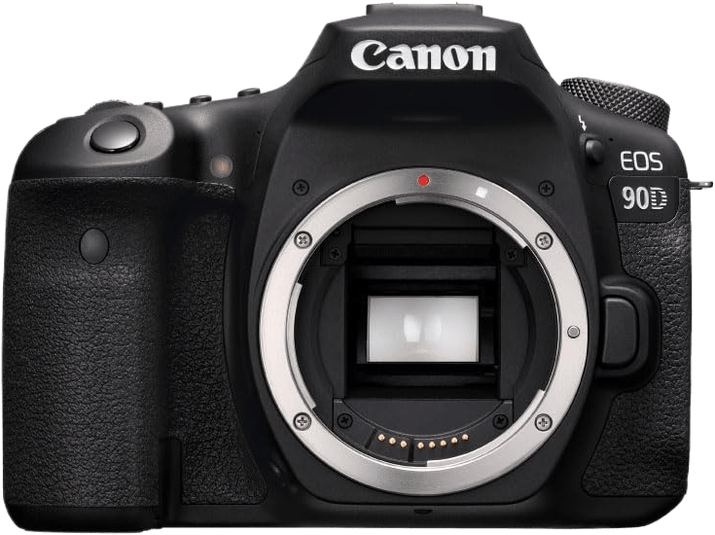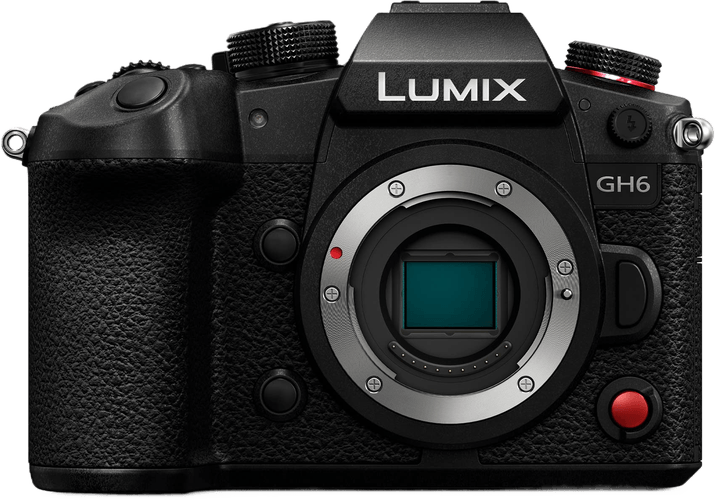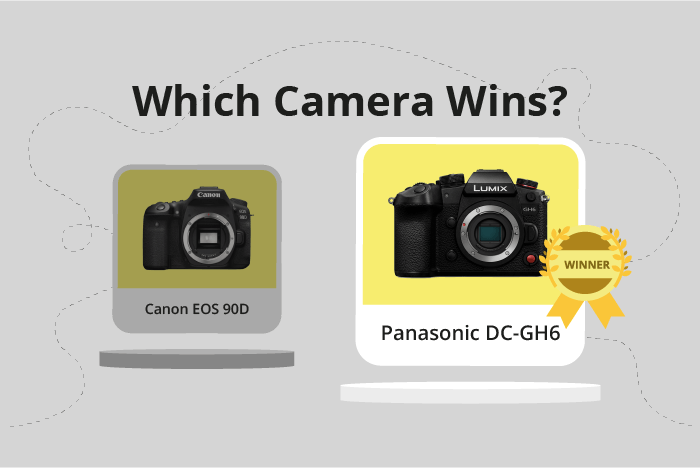Canon EOS 90D vs Panasonic Lumix DC-GH6 Comparison
Canon EOS 90D

Panasonic Lumix DC-GH6

The Panasonic Lumix DC-GH6 outperforms the Canon EOS 90D with a score of 73/100 compared to the latter’s 67/100. Both cameras share some common specifications, such as their announcement years (2019 for Canon EOS 90D and 2022 for Panasonic GH6) and their camera types (DSLR for Canon and mirrorless for Panasonic).
The Panasonic GH6 is superior due to its higher score, which reflects its overall better performance. However, the Canon EOS 90D has its advantages as well, such as a lighter weight of 701g compared to the Panasonic’s 823g. Additionally, the Canon camera is more affordable with a launch price of $1199, while the Panasonic GH6 is priced at $2199.
Taking these factors into consideration, the Panasonic Lumix DC-GH6 is the better choice for those seeking top-notch performance, while the Canon EOS 90D is a more budget-friendly option that still delivers quality results.
Canon EOS 90D vs Panasonic Lumix DC-GH6 Overview and Optics
The Panasonic Lumix DC-GH6 triumphs over the Canon EOS 90D in optics with a score of 69 to 62. Both cameras share common specifications such as CMOS sensors, varying aspect ratios (3:2 for Canon EOS 90D and 4:3 for Panasonic Lumix DC-GH6), and compatibility with their respective lens mounts (Canon EF/EF-S for Canon EOS 90D and Micro 4/3 for Panasonic Lumix DC-GH6).
The Lumix DC-GH6 outperforms the EOS 90D in several aspects. Its faster shooting speed of 14 frames per second (fps) compared to the 10 fps of the EOS 90D allows for capturing fast-moving subjects more effectively. Furthermore, the Lumix DC-GH6 has a higher DXOMARK sensor score of 71, indicating better overall image quality compared to the EOS 90D’s score of 58. Additionally, the Lumix DC-GH6 features image stabilization, which helps to reduce camera shake and produce sharper images.
On the other hand, the Canon EOS 90D has a higher megapixel count of 33 compared to the Panasonic Lumix DC-GH6’s 25 megapixels. This allows for capturing more detailed images and offers greater flexibility for cropping and printing larger sizes. However, the Lumix DC-GH6’s other advantages outweigh this benefit.
The Panasonic Lumix DC-GH6’s superior shooting speed, DXOMARK sensor score, and image stabilization make it the better choice for those prioritizing optics performance. While the Canon EOS 90D has a higher megapixel count, it falls short in other key areas. Therefore, the Lumix DC-GH6 stands as the winner in this optics comparison.
Canon EOS 90D vs Panasonic Lumix DC-GH6 Video Performance
The Panasonic Lumix DC-GH6 outperforms the Canon EOS 90D in video capabilities, scoring 96/100 compared to the 90D’s score of 91/100. Both cameras share some common features, such as a maximum video frame rate of 120fps and built-in time-lapse functionality. However, there are key differences that set the GH6 apart.
The GH6 offers superior video resolution, boasting 6K (5760 x 2880) compared to the 90D’s 4K (3840 x 2160) resolution. This higher resolution allows for more detailed and sharper video footage, providing an advantage to filmmakers and content creators who prioritize image quality.
On the other hand, the Canon 90D does not exceed the GH6 in any specific video capability. However, it still delivers strong performance with its 4K video resolution and other shared features. The 90D remains a solid choice for those who require reliable video performance without the need for 6K resolution.
In comparing the video capabilities of these two cameras, the Panasonic Lumix DC-GH6 is the clear winner due to its higher video resolution. The Canon EOS 90D, while not surpassing the GH6, still provides dependable video performance with its 4K resolution. Ultimately, the choice between these two cameras will depend on individual needs and preferences, with the GH6 catering to those seeking higher video quality and the 90D offering a more budget-friendly option without sacrificing too much in terms of performance.
Canon EOS 90D vs Panasonic Lumix DC-GH6 Features and Benefits
The Canon EOS 90D and Panasonic Lumix DC-GH6 both receive a feature score of 83 out of 100, making them equally competitive in this aspect. Both cameras share several common features, such as a 3-inch touchscreen, flip screen, lack of GPS, and the presence of WiFi and Bluetooth connectivity.
The Canon EOS 90D stands out with its screen resolution of 1,040,000 dots, which is lower than the Panasonic Lumix DC-GH6’s resolution of 1,240,000 dots. This difference in resolution, however, does not necessarily make the Canon EOS 90D a lesser camera in terms of features. Both cameras offer excellent image quality and performance, thanks to their advanced features and high-resolution screens.
On the other hand, the Panasonic Lumix DC-GH6 offers a higher screen resolution, which might be preferred by some users for a more detailed and clear image display. This advantage, however, does not mean that the Panasonic Lumix DC-GH6 is a better camera overall, as both cameras excel in their respective areas and cater to different user preferences.
In comparing the Canon EOS 90D and Panasonic Lumix DC-GH6, it is evident that both cameras have strong feature sets that cater to various needs and preferences. While the Panasonic Lumix DC-GH6 has a higher screen resolution, it does not necessarily make it a better choice. Similarly, the Canon EOS 90D’s lower screen resolution does not detract from its overall performance and capabilities. Ultimately, the choice between these two cameras will depend on the individual user’s requirements and preferences.
Canon EOS 90D vs Panasonic Lumix DC-GH6 Storage and Battery
The Panasonic Lumix DC-GH6 outperforms the Canon EOS 90D in the storage and battery category, scoring 68/100 compared to the EOS 90D’s 48/100. Both cameras accept SD, SDHC, and SDXC memory cards with UHS-II compatibility. However, the GH6 has two memory card slots and also supports CFexpress B cards, giving it an advantage over the 90D’s single memory card slot.
The Canon EOS 90D has a significantly longer battery life of 1300 shots, compared to the GH6’s 360 shots. The 90D uses an LP-E6N battery, while the GH6 utilizes a Li-ion Battery Pack. Despite the shorter battery life, the GH6 offers USB charging capabilities, which the 90D lacks.
While the Canon EOS 90D has superior battery life, the Panasonic Lumix DC-GH6 excels in storage options and USB charging convenience. Users must weigh the importance of battery longevity against the flexibility of storage and charging options when choosing between these two cameras.
Alternatives to the Canon EOS 90D and Panasonic Lumix DC-GH6
Are you still undecided about which camera is right for you? Have a look at these popular comparisons that feature the Canon EOS 90D or the Panasonic Lumix DC-GH6:

